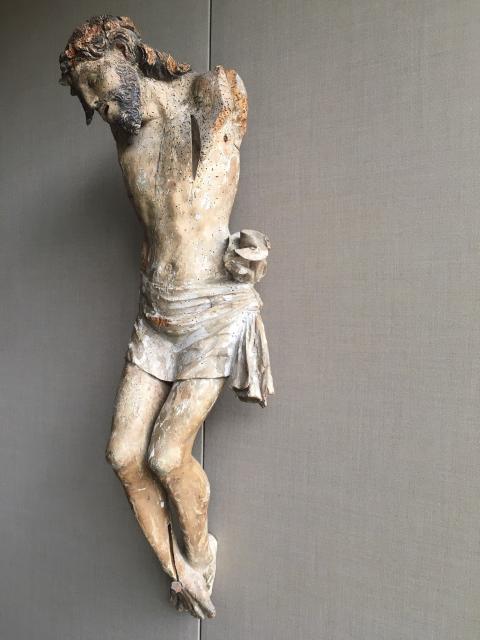Corpus Christi
Second half of the 14th century
Cobbenhagen Building

The work was purchased in the 1960s by the Executive Board of that time in the state in which it remains today. It is an original polychromed wooden statue, probably from southern France. Based on stylistic features, it is dated to the 14th century.
The image of the crucified Christ is in line with the views that existed in antiquity about the punishment that criminals or sinners had to undergo. Christ was condemned to die on the cross in Jerusalem by the Roman prefect Pontius Pilate, who thus applied the heaviest form of capital punishment. Christ was also sentenced to carry the cross himself, which was also customary (although it was unusual that Christ had to carry the whole cross, usually a condemned person only had to carry the crossbeam). The crucifixion took place on Mount Golgotha, the usual place for this form of "execution.”
The sculpture of the crucified Christ owned by the university is missing both arms and also the cross. There are no designs, preliminary studies or drawings of the statue, let alone photographs, which could provide a definite answer about something like the exact original position, about details, etc. For these reasons, sculptures like this one cannot, in principle, be restored—in the sense that they would be restored to their original state. For that reason and also because the work was purchased in this state, the university has chosen to conserve the sculpture in its present form. It expresses—despite its incomplete state—the Christian identity of the institution.
More about history and academic heritage
The Tilburg University academic heritage is a very diverse set of archives, visual materials, collections, devices, recorded stories, et cetera that relate to the history of the university.